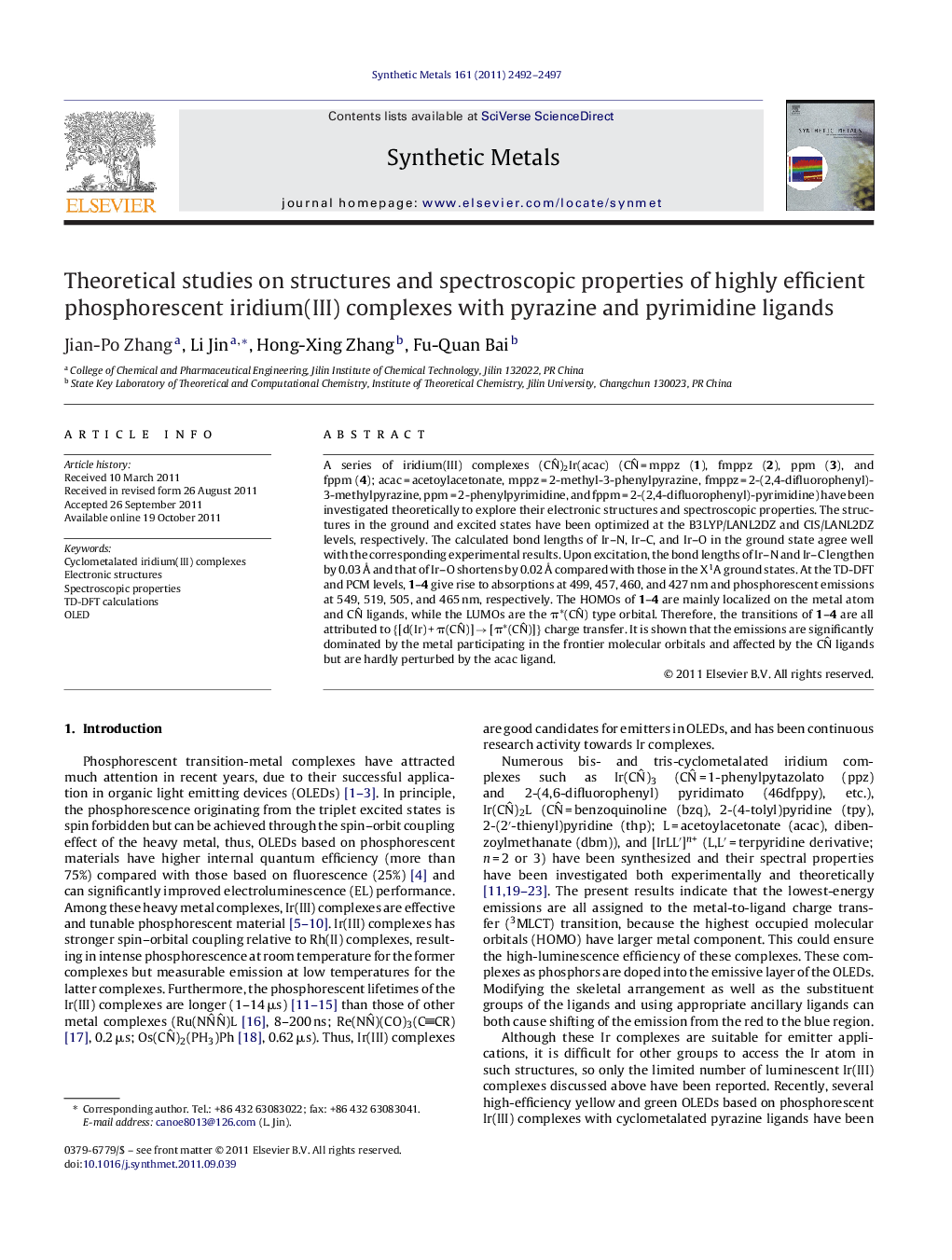| Article ID | Journal | Published Year | Pages | File Type |
|---|---|---|---|---|
| 1441784 | Synthetic Metals | 2011 | 6 Pages |
A series of iridium(III) complexes (C^N)2Ir(acac) (C^N = mppz (1), fmppz (2), ppm (3), and fppm (4); acac = acetoylacetonate, mppz = 2-methyl-3-phenylpyrazine, fmppz = 2-(2,4-difluorophenyl)-3-methylpyrazine, ppm = 2-phenylpyrimidine, and fppm = 2-(2,4-difluorophenyl)-pyrimidine) have been investigated theoretically to explore their electronic structures and spectroscopic properties. The structures in the ground and excited states have been optimized at the B3LYP/LANL2DZ and CIS/LANL2DZ levels, respectively. The calculated bond lengths of Ir–N, Ir–C, and Ir–O in the ground state agree well with the corresponding experimental results. Upon excitation, the bond lengths of Ir–N and Ir–C lengthen by 0.03 Å and that of Ir–O shortens by 0.02 Å compared with those in the X1A ground states. At the TD-DFT and PCM levels, 1–4 give rise to absorptions at 499, 457, 460, and 427 nm and phosphorescent emissions at 549, 519, 505, and 465 nm, respectively. The HOMOs of 1–4 are mainly localized on the metal atom and C^N ligands, while the LUMOs are the π*(C^N) type orbital. Therefore, the transitions of 1–4 are all attributed to {[d(Ir) + π(C^N)] → [π*(C^N)]} charge transfer. It is shown that the emissions are significantly dominated by the metal participating in the frontier molecular orbitals and affected by the C^N ligands but are hardly perturbed by the acac ligand.
